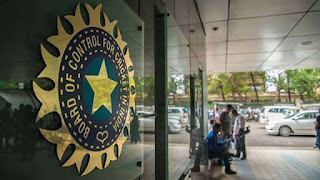Retired Not Out
On this day, in 1951, a West Indies batsman was born in Barbados. Everybody would wonder, that we have heard about Retired out, but what is retired not out?? Sounds strange.
 As per the Law 25 of Laws of cricket, a batsman can retire from his innings at any time, when the ball is dead and will be replaced by a team mate who is yet to be dismissed. This occurs commonly where the batsman gets injured or unwell. But that batsman, should need to come back and play his innings continuing. If he doesn't so, he is marked as retired hurt, as he may need medical attention outside(But all this comes under umpires' permission and most probably possible for a side batting last in a match)
As per the Law 25 of Laws of cricket, a batsman can retire from his innings at any time, when the ball is dead and will be replaced by a team mate who is yet to be dismissed. This occurs commonly where the batsman gets injured or unwell. But that batsman, should need to come back and play his innings continuing. If he doesn't so, he is marked as retired hurt, as he may need medical attention outside(But all this comes under umpires' permission and most probably possible for a side batting last in a match)
 As per the Law 25 of Laws of cricket, a batsman can retire from his innings at any time, when the ball is dead and will be replaced by a team mate who is yet to be dismissed. This occurs commonly where the batsman gets injured or unwell. But that batsman, should need to come back and play his innings continuing. If he doesn't so, he is marked as retired hurt, as he may need medical attention outside(But all this comes under umpires' permission and most probably possible for a side batting last in a match)
As per the Law 25 of Laws of cricket, a batsman can retire from his innings at any time, when the ball is dead and will be replaced by a team mate who is yet to be dismissed. This occurs commonly where the batsman gets injured or unwell. But that batsman, should need to come back and play his innings continuing. If he doesn't so, he is marked as retired hurt, as he may need medical attention outside(But all this comes under umpires' permission and most probably possible for a side batting last in a match)
In cricket, a batsman retires out without the permission of the umpire and also no having the permission of the opposition captain. If that batsman, didn't return, he is marked as retired out, in calculating his batting average.
But still what is retired not out ? and what does Gordon Greenidge linked to retired not out ?. Question arises.
During 1983, India tour of West Indies, in the 5th test, West Indies were batting comfortable along with the partnership of attacking right handed, lanky opener Gordon Greenidge and Desmond Haynes, where both scored centuries, during which, while batting at 154, he retired without the permission of both umpire and opposition captain to visit his daughter, admitted at hospital. His daughter died in hospital two days later, and as a mark of respect, his innings his named as "Retired Not Out". This is also called as the tragic century, in cricketing history.



Semma pa♥️
ReplyDeletethanks pa
Delete